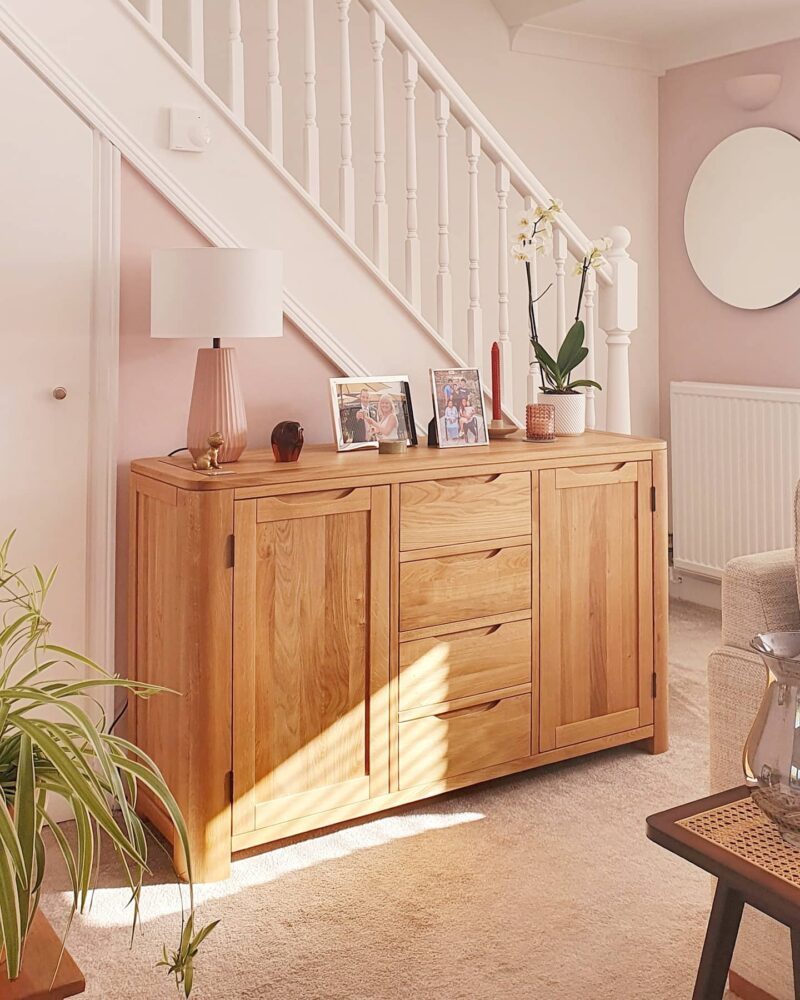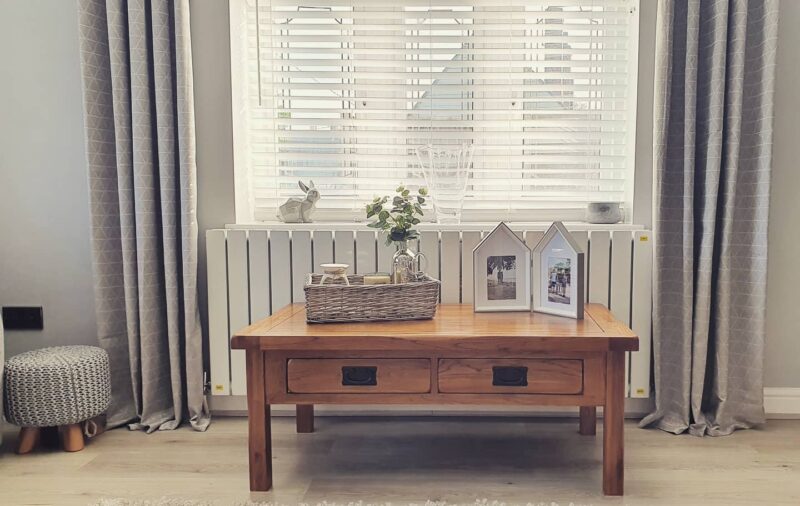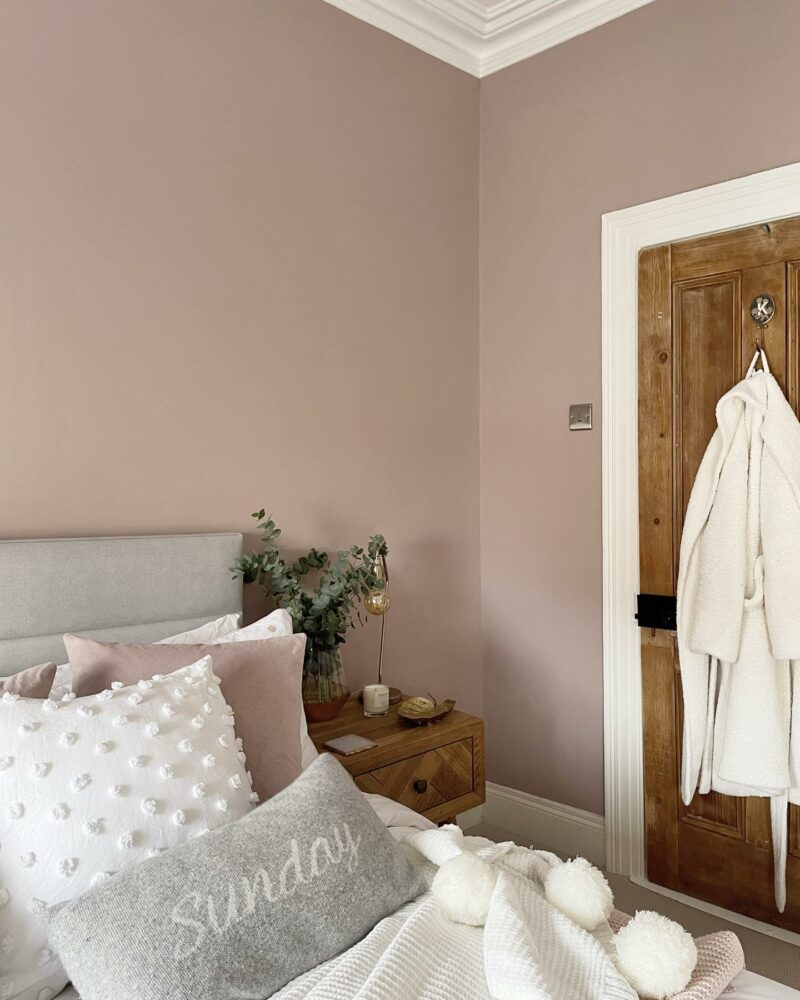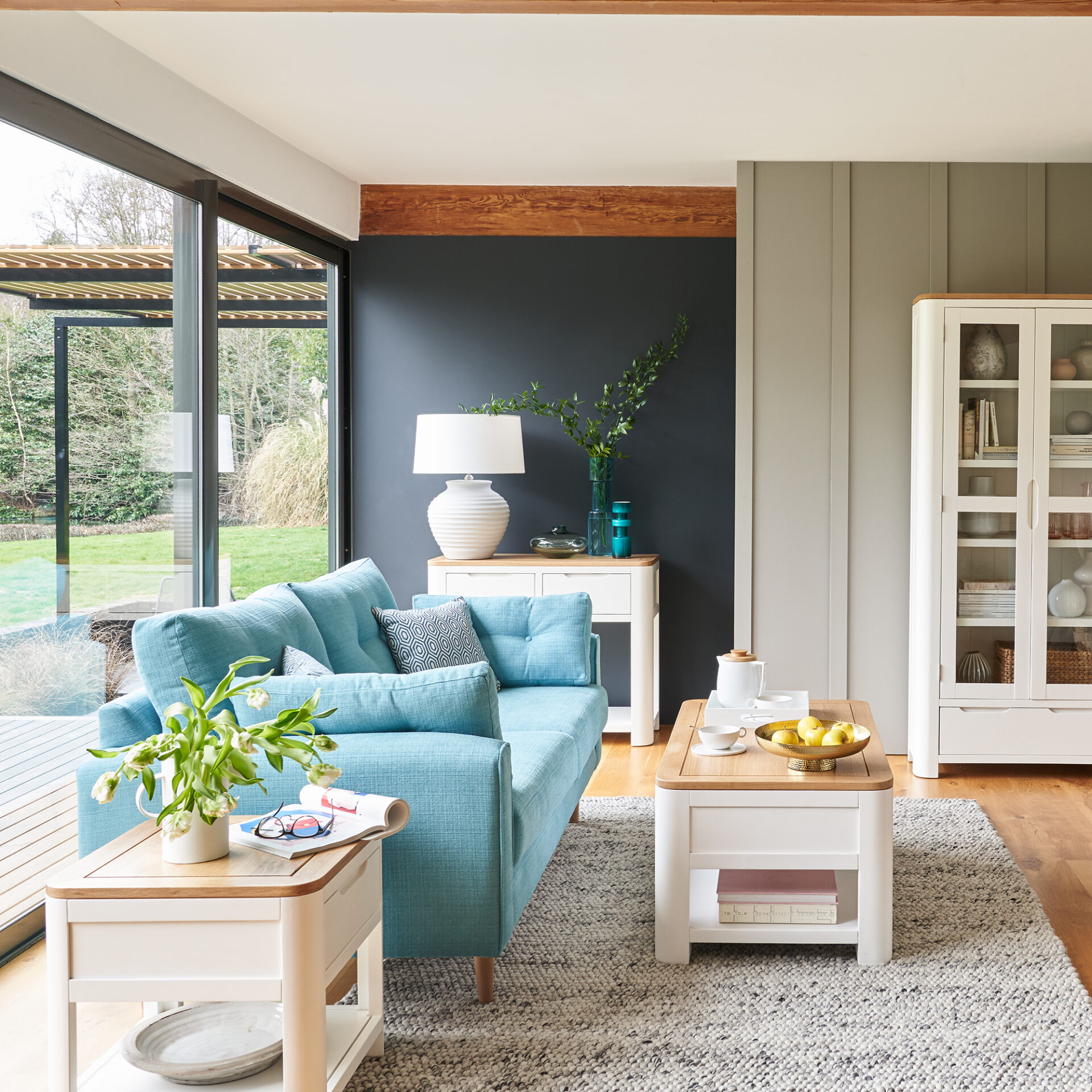Winter is fast approaching, and with it comes cold days and longer, darker nights. But there’s no need to feel gloomy! There are lots of fantastic ways to brighten up your home over the winter months and give your decor, and yourself, a little bit of a lift.
Banish the cold

Romsey large sideboard | @herandhers_
In the summer, our home is filled with natural light that adds brightness and warmth, complementing homes painted in cool colours, or bright whites. However, in winter months as the light changes, the lack of natural light can change these colours, making your space feel cold and gloomy. To help banish that chilly feeling, incorporate brighter and warmer tones that can help to combat the starkness, such as peach or rose pink.
If you prefer a dark colour scheme, then make sure to incorporate some pattern or texture. A dark room with no texture can make any room seem cold and dull, and this is only worse during the winter months. Adding in thick weave fabrics, velvet textures and pops of colour or pattern in a rug or feature wall can instantly brighten up the space.
On the bright side

Original Rustic coffee table | @walcot_home
For darker homes that feel even darker during the winter, there are some simple ways to brighten things up. Decluttering is a great way to tidy up and make your house feel lighter and brighter. Arrange items that you particularly love on shelves to create a tidier display that doesn’t make the house feel dim and dark.
Another great idea for dark houses is to avoid over-covering the windows. Heavy curtains can block out lots of light, even when they’re open so choose a slightly longer curtain pole so you have the option to avoid obstructing the window. You could also switch to blinds or more lightweight curtains to let more light in and brighten up the house. You should also avoid placing anything in front of the windows that may block light, such as furniture, or bushes or trees on the outside.
Reflective surfaces add warmth and light, so introducing these into your house is key. Do this in subtle ways, for example, with mirrors, mirrored photo frames or lamp bases, or even reflective fittings on kitchen or bathroom cupboards. But don’t overdo it! Too many mirrored surfaces can feel cold and clinical, so make sure to balance this out with warm toned and soft textured accessories.
Let there be light

Parquet bedside table | @atnumberfourteen_
When it comes to brightening up your home over the dark winter months, adding extra sources of light can be a quick and easy solution.
Don’t simply rely on harsher, overhead lighting. While this may be ideal for daytime working or studying, you’ll want to add lighting at different layers for different rooms and activities.
When it comes to the kitchen or bathrooms, you’ll want task lighting. Opt for LED strips beneath upper kitchen cabinets or around a bathroom mirror for perfect lighting without harsh bright light.
For living room and bedroom areas, however, you’ll want to opt for cosier lighting such as wall lights, lamps, and candles. Layer your lighting with lamps at differing heights and levels, and cater it to your room. Pop a tall floor lamp in the corner of your living or bedroom to create a cosy reading nook, and place table lamps at the side of your sofa or bed for warmer evening light.
Choose warmer lights
When choosing your lighting, you’ll want to offset colder, bluer tones as much as possible to create a warm, bright and inviting atmosphere. Opt for lampshades that help to diffuse light, and swap out any cool white bulbs that provide light like those often used in fluorescent tubes.
Lighting tips from the experts
If you’re not familiar with light bulbs beyond your normal choice of an incandescent bulb, there are so many options nowadays that it can be tricky to find exactly what you’re looking for. To help you out, we teamed up with experts The Lightbulb Company to give you a quick and easy guide to choosing the right light bulbs for your space. Here are a couple of things to look out for:
1. Correlated Colour Temperature (CCT)
CCT is a scale that ranges from cool or blue light like sunlight, to warm like candle light. It indicates what shade of white the light bulb will be. Check the packaging of your bulbs to find the CCT rating. While colour temperature names differ from brand to brand, the actual number is often more helpful than relying on the descriptor alone.
2. Lumens
Lumens indicate the brightness level of a light bulb. The level of brightness you need depends on the room you’ll place it in and the type of tasks you will be performing under them:
800 lumens or higher for reading and other focus-intensive tasks
400 lumens for general lighting
100-200 lumens is perfect for entertaining
If you’d like to maintain some flexibility with your lighting, The Lightbulb Company recommends getting a brighter bulb that is dimmable or comes with three-step dimming built in, so that you can have a range of brightness levels even in lamps without dimming capabilities.
3. Colour Rendering Index (CRI)
CRI rating indicates how accurately a light bulb renders colours on a scale from 0 (very poorly) to 100 (as accurately as daylight). Look out for light bulbs with a CRI rating of at least 80.
This may not seem overly important if you’re not colour matching shades for a design project, but it can make a big difference to light quality – something that’s important when displaying artwork – and makes it easier to do things like reading.
Now that you know what to look for when choosing your bulbs, you can change your lighting to match the mood and feel you’re trying to create in your home.
You should now be ready to brighten up your home and if you need more inspiration, find plenty more winter-themed posts on our blog. And, make sure to tag us on Instagram using #OakFurnitureland to show us how you style your pieces!

